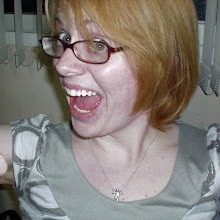http://www.coexmall.com
- admission: free
- subway: Line #2 (green) to Samsung Station/삼성역, exit #6

What makes COEX a great place to spend on a rainy day is the sheer amount of things to do under one roof. COEX is one of the largest malls in Asia, if not the largest, with a plethora of shops... cafes... restaurants... and more! For instance, today I went to Bandi & Luni's to browse their selection of English-language magazines, and then went to one of the Starbucks to relax with a coffee and read what I had just bought. Afterwards, a manicure (for W15,000) seemed appropriate. From there, I could have gone to the COEX Aquarium, the Kimchi Field Museum, or watched a film at the 17-screen Megabox theater. Instead, I chose to save some money, do something cultural, and head outside to Bongeunsa Temple across the road.
Bongeunsa
http://www.bongeun.org/
- admission: free
- subway: Line #2 (green) to Samsung Station/삼성역, exit #5

Bongeunsa was originally built in 794AD, and has been rebuilt and restored many times since. The best time to visit is between 14:00 and 16:00 on Thursdays, as the temple provides an English-language program as an introduction to the temple. However, I am unable to attend this program. According to the temple staff that I spoke with, the program costs W10,000 and includes a temple tour, making lotus lanterns, the dado tea ceremony, and seon meditation. It seems as though any visitor interested in Korean Buddhist temples would be well-advised to check it out.
The most visible draw of the temple is the hug statue of the Maitreya Buddha. It is 23m in height, and was built in 1996 as the largest statue of Buddha in Korea. There are numerous other buildings on the grounds, as well, including one which holds sutra carved into wooden blocks in the 1850s.
I hope to go to Bongeunsa again, perhaps on a temple stay. It would be convenient to be able to take the subway home.
